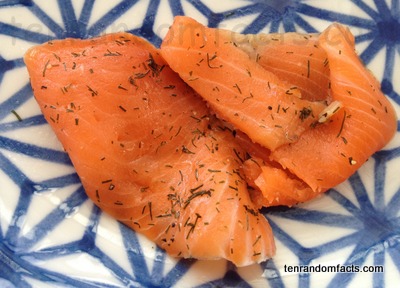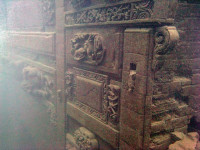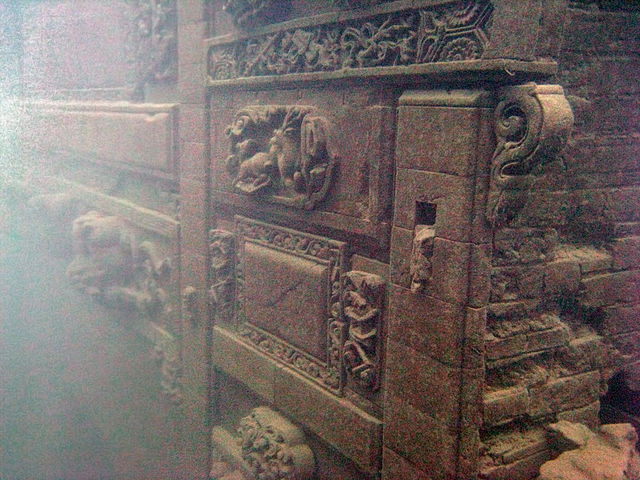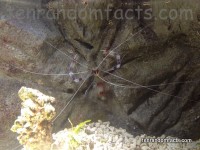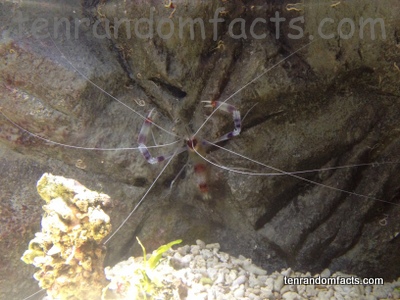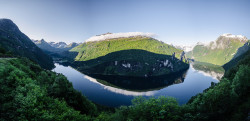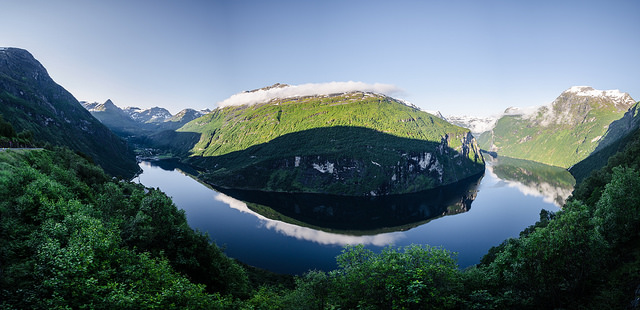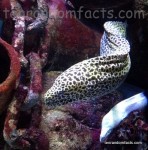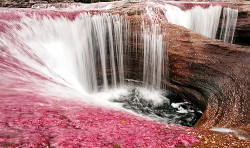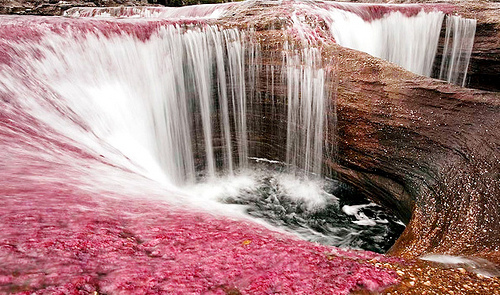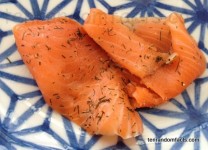
I’m sure salmon would make great salesmen.
- Salmon is among a number of fish that are popularly produced and eaten as food, and Atlantic salmon is the most commonly consumed species of salmon in the world.
- Salmon species are mostly native to the northern Atlantic and the Pacific Oceans, and are from the Salmo and Oncorhynchus genera respectively, both of the Salmonidae family.
- The colour of raw salmon flesh ranges from red to orange, and occasionally white, patterned with thin, pale stripes, and once cooked, the flesh often lightens in colour and sometimes looks pink.
- Approximately 70% of salmon produced for commercial purposes is farmed, usually in sheltered areas like bays, in a netted enclosure.
- Salmon is known as an ‘oily fish’, and is popularly cooked by smoking; although curing, like in a mixture of sugar, dill, salt and pepper as in ‘Gravlax’ is popular; and other forms of cooking are not uncommon.
Salmon prepared with herbs
- Salmon is able to be eaten raw as in sushi, though the fish is usually frozen for 24 to 48 hours before consuming to ensure any possible parasites in the fish are destroyed.
- Salmon has been commonly eaten since early times, with many cultures traditionally smoking the fish; and in modern times it is generally obtained commercially as fillets, steak, whole and canned.
- Salmon is very high in selenium, vitamins B6 and B12, niacin and protein and it has significant quantities of many other vitamins and minerals, and is also well known for its omega-3 fatty acids.
- Live salmon will often consume poisons such as mercury or chemicals dumped into water sources, and although this can result in human poisoning if large quantities of the meat is eaten, the risk is low, and current guidelines suggest that the consumption of this or similar fish once a week is safe.
- In 2014, Norway produced the most salmon in the world, with more than a million tonnes (1.1 million tons), which accounted for more than a third of the world’s production.
Bibliography:
Aquaculture of Salmonids, 2016, Wikipedia, https://en.wikipedia.org/wiki/Aquaculture_of_salmonids
Salmon, 2016, The World’s Healthiest Foods, http://www.whfoods.com/genpage.php?tname=foodspice&dbid=104
Salmon as Food, 2016, Wikipedia, https://en.wikipedia.org/wiki/
Salmon Farming Industry Handbook 2015, 2015, Marine Harvest, http://www.marineharvest.com/globalassets/investors/handbook/2015-salmon-industry-handbook.pdf





